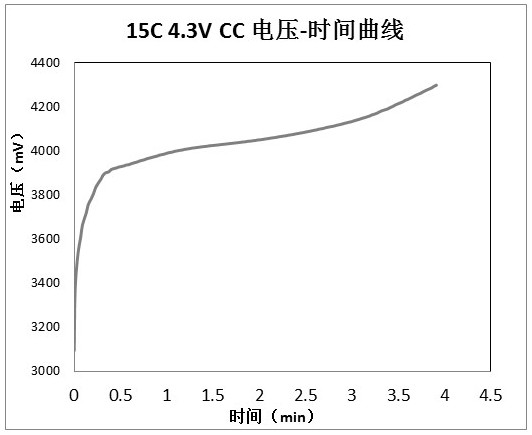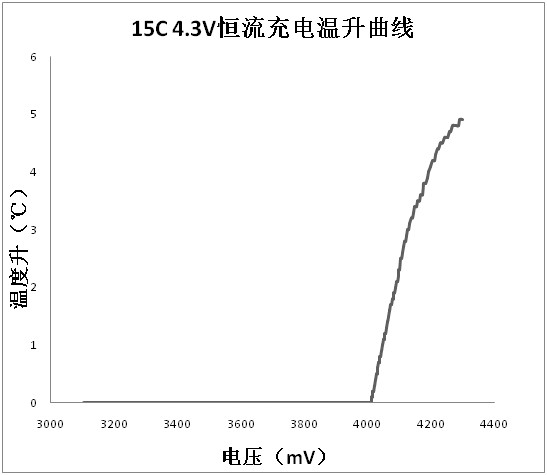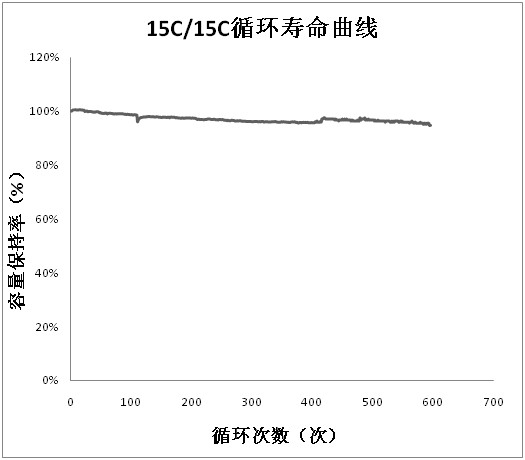A fast-chargeable lithium-ion battery negative plate
A lithium-ion battery, fast charging technology, applied in battery electrodes, secondary batteries, secondary battery repair/maintenance, etc., can solve problems such as unfavorable normal use of equipment, restrict the use of lithium-ion batteries, etc., and achieve good high-rate charging performance , long cycle charge and discharge life, improve the effect of charging performance
- Summary
- Abstract
- Description
- Claims
- Application Information
AI Technical Summary
Problems solved by technology
Method used
Image
Examples
Embodiment 1
[0026] Example 1 A rapidly chargeable lithium-ion battery negative electrode
[0027] Negative electrode raw material formula: ingredient 1, ingredient 2;
[0028] The ingredient 1 contains the following raw materials in parts by weight: 93 parts of negative electrode active material, 0.5 part of CMC, 0.35 part of SBR, 2.5 parts of conductive carbon black, and 10 parts of water;
[0029] The batching 2 contains the following raw materials in parts by weight: 92.5 parts of negative electrode active material, 3.8 parts of PVDF, 7.8 parts of conductive carbon black, and 10.4 parts of N-methyl-2-pyrrolidone;
[0030] The negative electrode active material is composed of artificial graphite and mesocarbon microspheres in a mass ratio of 1:1.1, and the particle diameter D50 of artificial graphite and mesocarbon microspheres is 10.0 μm;
[0031] The mass ratio of ingredient 1 to ingredient 2 used is 1:1.2.
[0032] The preparation method of the battery negative plate, the specific ...
Embodiment 2
[0036] Example 2 A rapidly chargeable lithium-ion battery negative electrode
[0037] The difference between Example 2 and Example 1 is that the content of the negative electrode raw material formulation components is different, wherein the ingredients 1 contains the following raw materials in parts by weight: 90 parts of negative electrode active material, 0.2 part of CMC, 0.1 part of SBR, 1 part of conductive carbon black, 8 parts of water; batching 2 includes the following raw materials by weight: 90 parts of negative electrode active material, 3 parts of PVDF, 6 parts of conductive carbon black, 8.5 parts of N-methyl-2-pyrrolidone; the rest of the methods and steps are the same as in Example 1.
Embodiment 3
[0038] Example 3 A rapidly chargeable lithium-ion battery negative electrode
[0039] The difference between embodiment 3 and embodiment 1 is that the content of negative electrode raw material formulation components is different, wherein batching 1 contains the following raw materials by weight: 95 parts of negative electrode active material, 0.8 part of CMC, 0.5 part of SBR, 3.5 parts of conductive carbon black, 12 parts of water; batching 2 includes the following raw materials in parts by weight: 95 parts of negative electrode active material, 6.5 parts of PVDF, 8.8 parts of conductive carbon black, and 12.5 parts of N-methyl-2-pyrrolidone; the remaining methods and steps are the same as in Example 1.
PUM
| Property | Measurement | Unit |
|---|---|---|
| particle diameter | aaaaa | aaaaa |
| viscosity | aaaaa | aaaaa |
| particle diameter | aaaaa | aaaaa |
Abstract
Description
Claims
Application Information
 Login to View More
Login to View More - R&D
- Intellectual Property
- Life Sciences
- Materials
- Tech Scout
- Unparalleled Data Quality
- Higher Quality Content
- 60% Fewer Hallucinations
Browse by: Latest US Patents, China's latest patents, Technical Efficacy Thesaurus, Application Domain, Technology Topic, Popular Technical Reports.
© 2025 PatSnap. All rights reserved.Legal|Privacy policy|Modern Slavery Act Transparency Statement|Sitemap|About US| Contact US: help@patsnap.com



